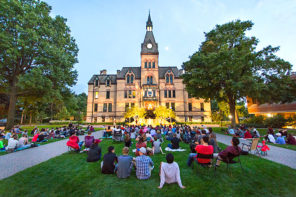Bruce Lawrence’s recent piece on Islamophobia/Islamophilia here at RD highlights two different approaches to understanding Muslims. The first is a popular, essentializing vision that treats Muslims as a monolith. This approach seeks to place Muslim history in a story where Muslims would not recognize themselves. It can only reach this point by oversimplifying comparative traditions, as Spencer Dew so deftly points out in his critique. The other approach is a more nuanced one, that seeks to understand the various currents and debates amongst Muslims. Unfortunately, as we have seen with respect to current foreign policy positioning, the simplistic narrative dies hard.
I was recently on CNN to discuss being Muslim in America after the attempted Times Square bombing. I shared the time with Arsalan Iftikhar, The Muslim Guy, and Soumaya Khalifa of the Islamic Speakers Bureau of Atlanta, who suggested me for the segment. Although I consider both of them friends, we did not speak before the segment, and while I think our points were complementary, Don Lemon, the host, had the last words. I believe the three of us were trying to add some complexity to portrayals of what it means to be Muslim in America. It’s good, but not perfect. Unfortunately, Lemon’s closing remarks brought us right back to the simple narrative of the American-Muslim terrorist.
Lemon showed a picture of Nidal Hassan as a terrorist, absent any facts, denigrating the service of the Muslim-American service members who serve with honor. Lemon then says that most acts are carried about by Muslims, ignoring the points raised by Arsalan and Soumaya. I wish I mentioned that a Muslim was involved in reporting the Times Square bomb car, or that Soumaya mentioned that it was a Muslim who turned in the Hutaree, but I am glad Arsalan got in the racial component of the way we talk about terrorism (see my earlier piece on these points).
There is a narrative that Muslim-Americans must counter, and the most effective way to do that is through another narrative. We cannot be defined by others, but have to define ourselves and our place in this country. We have been here for generations and are part of the American landscape. The narrative of “American vs. Muslim” is not only damaging to Muslims, but to America’s interests and only supports those who seek to radicalize youth within our borders. Fortunately, we now have a president in office who understands this idea, and is supplying the language to help us change the narrative.




